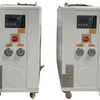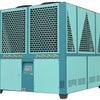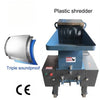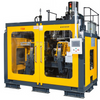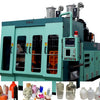Advances in Plastic Auxiliary Crushing Machines: Technological Innovations and Industrial Applications

1. Introduction
The global plastic waste crisis has intensified demand for efficient recycling solutions, positioning plastic auxiliary crushing machines as indispensable tools in modern manufacturing. These machines, ranging from low-power benchtop models (e.g., YL-3HP with 2.2 kW motor) to high-capacity industrial systems (e.g., YL-100HP with 75 kW motor), enable the conversion of waste materials—such as PET bottles, PVC pipes, and nylon scraps—into reusable granules. This paper reviews their technical evolution, operational mechanisms, and industrial significance, while addressing emerging trends like AI-driven automation and eco-friendly processing.
2. Working Principles and Technical Design
2.1 Core Mechanisms
Plastic auxiliary crushing machines operate through three primary stages:
- Pre-Crushing: Materials (e.g., thick-walled containers or films) enter the crushing chamber via dual-layer feed hoppers. Rotating blades (claw-type, flat-type, or hammer-type) and fixed knives shear and impact the material.
- High-Speed Crushing: Motors drive blade assemblies (500–600 rpm) to fragment plastics into smaller particles. For thermosensitive materials (e.g., LDPE), water-air hybrid cooling systems prevent thermal degradation.
- Screening and Output: Particles pass through adjustable sieves (aperture sizes 3–12 mm). Oversized fragments undergo secondary crushing in closed-loop systems until meeting size requirements (e.g., 60–100 mesh for powder coatings).
2.2 Key Design Features
- Noise Reduction: Double-layer steel housings with soundproofing insulation reduce noise levels to <80 dB (e.g., GJ500-15HP model).
- Safety Systems: Overload protection, phase sequence controllers, and CE-certified electrical components ensure operator safety.
- Modular刀具: Replaceable claw knives (e.g., SKD-11 alloy steel) extend tool life and adaptability to materials like ABS, PC, and recycled composites.
- Energy Efficiency: Full-electric drives (e.g., BE15D-620) cut energy consumption by 40% compared to hydraulic systems.
3. Classification and Industrial Applications
3.1 Machine Types
| Type | Key Features | Typical Applications |
|---|---|---|
| Flat-Knife Crushers | Wide blades for large-volume thin-walled materials | Bottles, films, blow-molded containers |
| Claw-Knife Crushers | High-torque rotors for rigid plastics | PVC pipes, automotive parts, industrial waste |
| High-Speed Impact Mills | 30–75 kW motors for fine powder production | Coatings, 3D printing filaments |
3.2 Sector-Specific Use Cases
-
Packaging Industry:
- Recycling PET bottles into flakes for remanufacturing (throughput: 600–1,000 kg/h for YL-75HP models).
- On-demand shredding of defective products in injection molding lines.
-
Automotive Sector:
- Processing composite plastic waste (e.g., dashboards, bumpers) into reusable pellets.
-
Healthcare:
- Sterile grinding of medical-grade polymers (e.g., PP syringes) with stainless-steel chambers to prevent contamination.
4. Technological Challenges and Solutions
4.1 Material Diversity
- Problem: Varying hardness (e.g., soft PE vs. rigid PVC) and contaminants (e.g., metal residues) complicate uniform particle size.
- Solution: Multi-stage crushing with adjustable blade gaps and magnetic separators.
4.2 Environmental Compliance
- Challenge: Meeting EU Directive 2019/904 on single-use plastics and China’s 2025 recycling targets.
- Innovation: Closed-loop dust collection systems (e.g., cyclone filters reducing particulate emissions to <5 mg/m³).
4.3 Cost Optimization
- Issue: High maintenance costs due to blade wear in abrasive materials.
- Advancement: Carbide-coated knives and predictive maintenance via IoT sensors (e.g., vibration analysis for bearing health).
5. Future Trends
5.1 Smart Manufacturing
- AI Integration: Real-time adjustments of rotor speed and sieve aperture using machine learning algorithms.
- Digital Twins: Virtual simulations for optimizing crushing parameters before physical trials.
5.2 Circular Economy
- Biodegradable Plastics: Development of crushers compatible with PLA and PHA, addressing thermal sensitivity.
- Decentralized Recycling: Compact, mobile units for on-site waste processing in remote areas.
5.3 Sustainability Metrics
- Carbon Footprint Reduction: Solar-powered motors and water-cooled systems cutting energy use to 1.5 kWh/kg output.
6. Conclusion
Plastic auxiliary crushing machines are pivotal in transforming waste into value-added resources. Innovations in noise reduction, energy efficiency, and smart controls have expanded their applicability across industries. Future research should prioritize compatibility with bioplastics, AI-driven process optimization, and compliance with stringent environmental standards to align with global sustainability goals.

